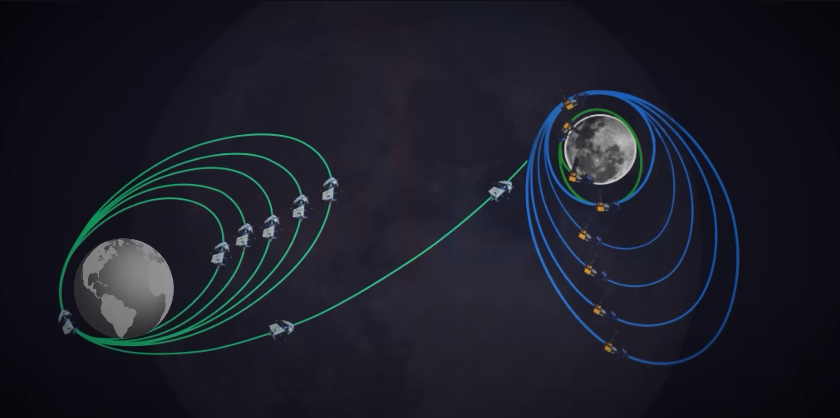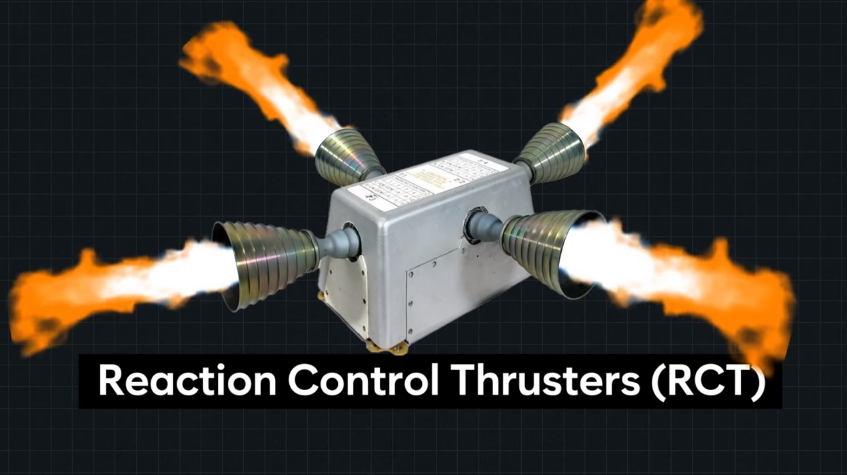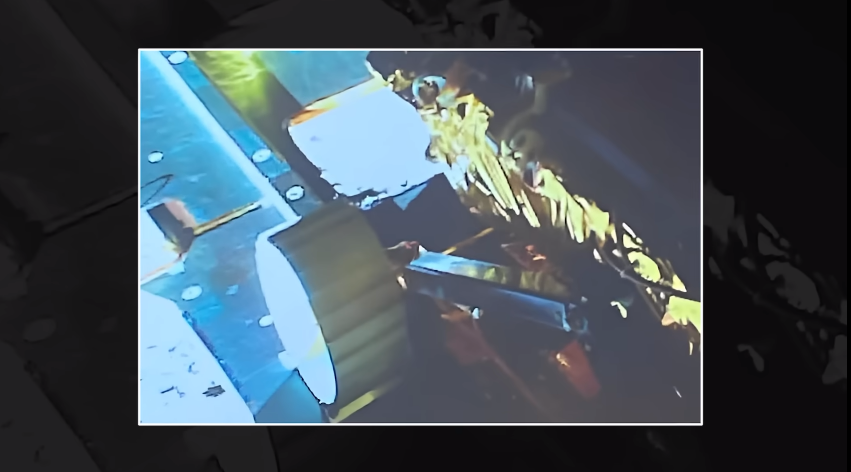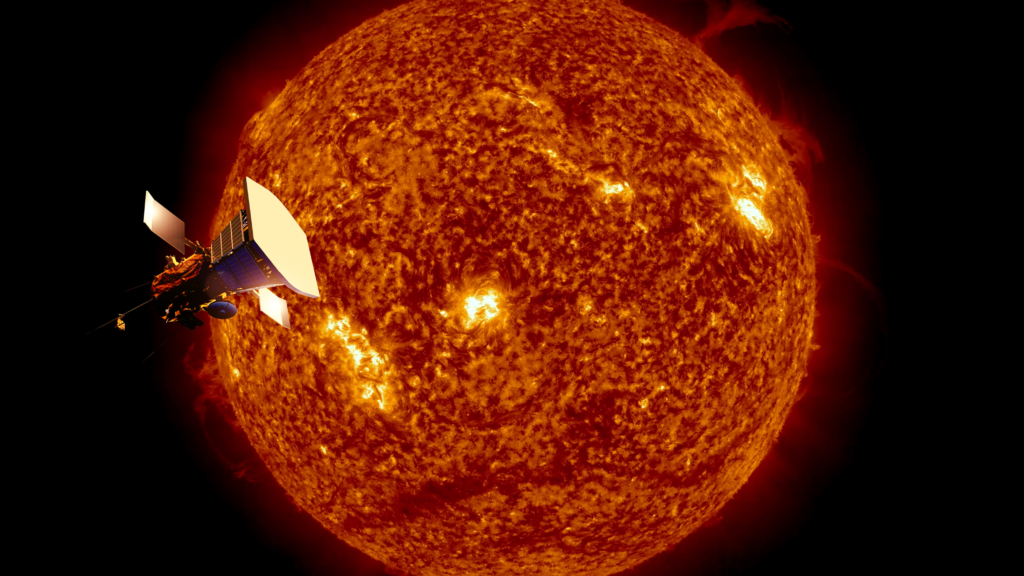August 3, 2023 Around 6:04 PM IST, 8:34 AM UST Chandrayaan 3, the first time anyone has landed on the dark side of the Moon.
The Chandrayaan 3 Praghyan rover has sent a picture of landing from the Vikram lander that will make India proud. Because this picture will prove that India also landed on the moon.
Rover Image of Chandrayaan 3
As soon as the Praghyan Rover began moving across the surface of the Moon. So the logo of ISRO on the surface of the moon was hidden on the ground.
Because ISRO had stamped its logo on the tires of Pragyan Rover. Now, wherever the rover goes, ISRO’s marks will remain hidden on the surface of the moon.
New Missions of ISRO
Considering its success, the investment of India’s start-up has increased many times. Whereas 4 years ago, only ten Indian startups were investing in ISRO’s mission. Now this count has reached 140. Now big bad agencies are also ready to collaborate with India like England and Japan. They have planned two new missions with ISRO in this collaboration.
Now it can be said that along with India, other countries also have faith in India. And at the same time, everyone was confident that Chandrayaan 3 would land successfully at the North Pole.
4 days before Chandrayaan 3’s landing.
But if you look back four days ago, it was not like that at all, because at that time, the Russian Luna 25 was completely hitting Chandrayaan 3. Actually, on August 11, 2023, Russia launched Luna 25.

Unlike Chandrayaan 3, it directly entered the moon’s orbit by direct launching without rounding the earth. According to the calculation of Russian scientists, Luna 25 was going to land 2 days before Chandrayaan 3.
But unfortunately, during the final phase on August 19, Luna 25 overthrusted and crashed into the lunar surface and was destroyed. With this, their mission ends there.
But the scientists of ISRO as well as NASA were fully confident that this time Chandrayaan 3 would land on the north pole of the Moon. This is because they all already knew that because India had already failed 2 times, they learned a lot from their mistakes and re-launched this mission after correcting those mistakes.
In simple words, ISRO had done complete planning this time so that the chances of success are high.

Testing was the step of Full Prove Planning where all the conditions of all instruments of the mission were tested at different levels according to their working. First of all, ISRO scientists first conducted cold testing of all sensor and navigation systems installed in Vikram Lander, their main motive was to check the temperature capacity, whether they are working in cold temperature or not.
Because we all know that the average temperature of the moon is -13 degree Celsius due to the absence of any atmosphere and also due to the fact that the sun’s rays do not fall in the south pole of the moon.

That’s why ISRO tested it at 5 degrees lower i.e. -18 degrees to make its mission successful.

Among all these sensors, the most important sensors were LPDC (Lander Position Detection Camera) and ILSA PAYLOAD Lander Hazard Detection Avoidance Camera (LHDAC).
Now normally all these sensors are tested in a thermal vacuum chamber. Which is kept equal to the cold temperature of space with the help of liquefied nitrogen and liquid helium.
It is quite a high budget process ISRO in case of Chandrayaan 3 took help of helicopter to make it budget friendly.
They loaded him into a helicopter and took him to a place where the temperature was -18. There, ISRO looked at its signal capacity, i.e. how late its signals travel. All these parameters were checked thoroughly.
They then tested the thrusters that would power the lander as the lander was supposed to bring its landing speed from 6,000 km/h to 0.
Vikram Lander Thruster
So basically two Vikram Lander Thrusters were deployed.
First LAM (Liquid Apogee Motor)

There are 2 liquid fuels in its list. Hydrazine and Nitrogen Tetroxide which both combine to produce energy and provide thrust.
Another type of thruster is called Reaction Control Thruster (RCT)

which help the lander to change its velocity and direction. In a way you can say they act like a tire. If the lander is to make a left side turn, the thrusters on the tight side of the lander will be declined.
ISRO tested these two thrusters so that the landing of Chandrayaan 3 on the Moon could be done through a soft landing.
Well, apart from these two, soft landing is another part that works too. If even a small mistake is made here, the mission fails. And that’s the lander’s legs.
ISRO also failed in Chandrayaan 2 for the same reason that it made the legs of Chandrayaan 2 smaller but this time ISRO made the legs of Chandrayaan 3 larger than Chandrayaan 2. This time ISRO was confident that this time Chandrayaan 3 would land successfully and it did. Everything went according to ISRA’s plan.
How did Chandrayaan 3 land?
According to ISRO’s plan, as soon as the lander reached 754 km above the surface of the moon in the lunar orbit, it first scanned the surface of the moon and first chose the landing site. Traveled for 30 km at the speed of second.
Now the lander started to land slowly on the surface of the moon and its four legs prepared for soft landing. These lander legs are equipped with Micro-Star Sensor and Touchdown Sensor, which scanned the surface of the moon and did its casual mapping. It has actuators and inclinometers adjusting signals so that the balance of the lander does not deteriorate when contacting the ground.
Now this was known to the scientists even in spite of the whole situation. That when the legs of this lander will touch the surface of the moon, then it will experience a shock. In order to extend the same shock, shock observing dimples were installed in the lander like a ship. Which can absorb force of approximately 4000 N. It is such a force, if a person falls down with such a force, maybe one of his bones will remain intact. Because of which Lander land became.
Now you can see how difficult ISRO’s plan was with the common sense that there was no room for error. Because one small mistake and what could have happened is right in front of you.
Chandrayan 3 sent the first picture.
Four hours after the lander landed, the image was sent by the Pragyan rover through a ramp from the lander. The first picture of which you can see.

Now after that it first established communication with the lander with the help of receive transfer antenna. So that the information of Lander rover can be transmitted to the ground. This antenna can send and receive signals just like a normal TV. But there is a problem with this. That the rover has to stay within a radius of 500 meters of the lander.
Moon Surface Chemical Testing
Now two instruments are going to help him in this, Alpha Particles X-Ray Spectrometer (APXS) and Laser Induced Breakdown Spectrometer (LIBS). Both will be used to study the composition and elements of the Lunar surface. So that what is the composition of soil on the surface of the moon can be found out.
Well, now only time will tell what Chandrayan 3 will show after finding water. Now many space agencies are collaborating with ISRO. Of which the top and latest mission is Japan’s space agency JAXA and ISRO’s Lunar Polar Exploration LUPEX. In which the lander will basically be made with the technology of ISRO and the rover and launcher will be of JAXA.

